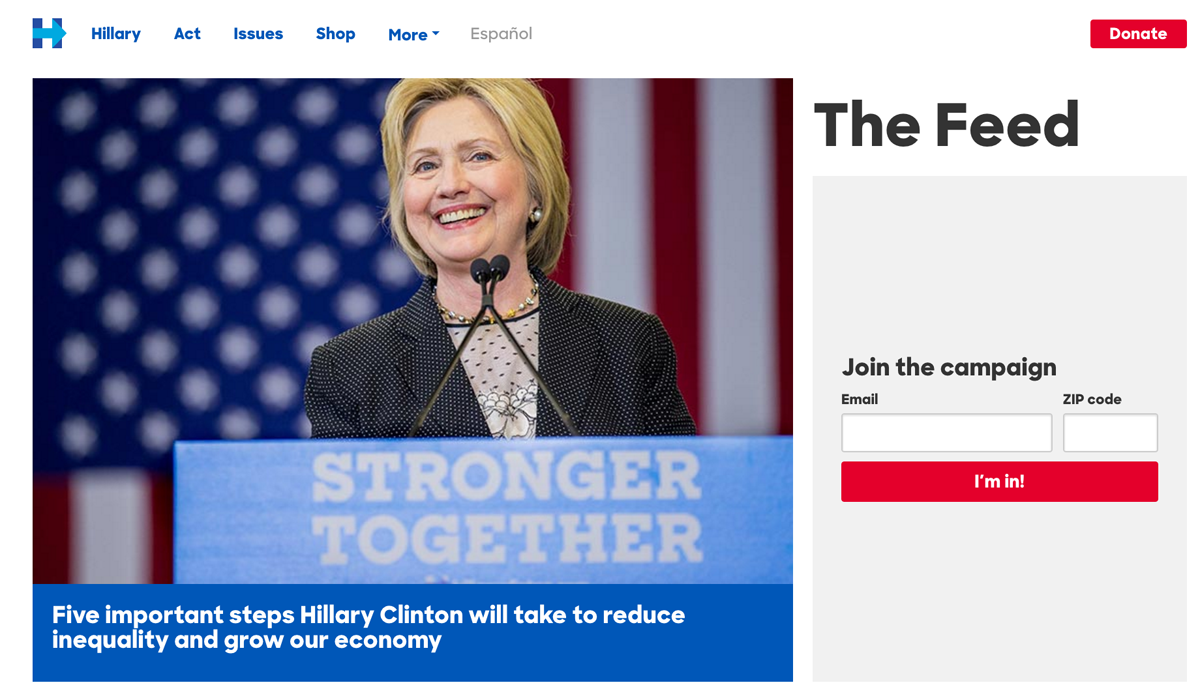If social media is the supposed vehicle to greater civic engagement, it’s not especially apparent so far among presidential candidates this election season, according to a new Pew Research Center report that verges on a semi-obituary for campaign websites.
In sum, a study of communications of the Hillary Clinton, Donald Trump and Bernie Sanders campaigns shows an inclination to control messages, point voters to generally self-serving news and not be especially targeted to individual demographic groups.
And when it comes to the press, the themes are clear: “Clinton’s campaign has almost entirely bypassed the news media while Trump draws heavily on news articles.” All in all, Pew portrays candidates erring to the side of social media caution, not being intent on provoking citizen response and, by and large, centralizing how they want to be portrayed.
Part of the study involves scrutiny of what is clearly a diminished vehicle for any candidate, namely his or her website. Pew finds Clinton’s uninspired, with its two primary sections tending to “mimic the look and feel of a digital news publisher, but oriented around original content produced in-house. ”
Trump, an already legendary user of Twitter, “mostly posts stories from outside news media on his website. This pattern is also evident on social media, where 78 percent of Trump’s links in Facebook posts send readers to news media stories while 80 percent of Clinton’s direct followers to campaign pages. On Twitter, a similar tendency emerges in what each links to. Sanders, for the most part, falls in between the two.”
Pew did its first such analysis 16 years ago and now finds, arguably curiously, that “unlike previous cycles, none of the sites offers the user the option to create a personal fundraising page, nor do their news verticals have comment sections. And only Sanders affords supporters the ability to make calls on his behalf, offering customized scripts; the other candidates limit outreach to donation requests and email and volunteer sign-ups. Moreover, it was rare for any of the three to repost material on social media from outsiders (there were almost no re-shares on Facebook and only about two-in-ten tweets from any of the candidates were retweets).”
Another oddity, given assumptions about the need to target groups, is the absence of areas on the candidates’ websites aimed at differing social and demographic groups, be they seniors or African-Americans, among others. By contrast, President Obama’s 2012 re-election site “offered opportunities to join 18 different constituency groups, among them African-Americans, women, the LGBT community, Latinos, veterans/military families or young Americans, with content targeted to each constituency.”
For sure, candidates exhibit a clear understanding of the obvious in turning to Facebook and Twitter, especially in posting videos. During the time period studied by Pew, the Clinton campaign posted about five videos a day on Facebook and Twitter and “embedded video in about a quarter of both her total tweets and Facebook posts. ”
Trump, who averaged about one video a day on social media, “was least likely to include regularly updated videos on either social platform (only 2 percent of his tweets, for example).”
Then, again, given his access to free media and willingness to say whatever he wants, whenever he wants, to almost any welcoming media outlet he wants, that may not be a great surprise.






